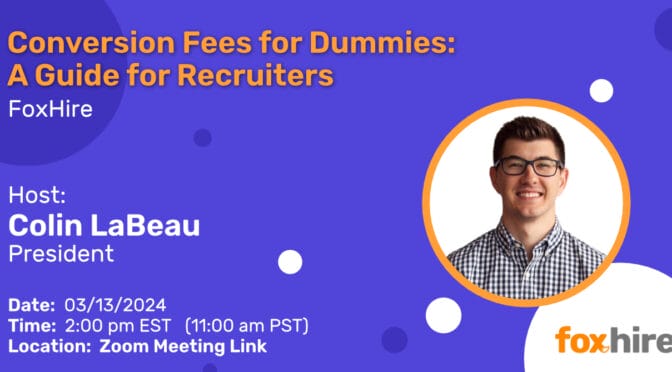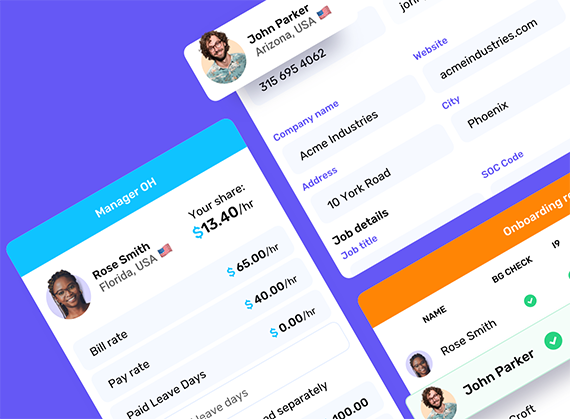The labor market is changing, and contingent workforce programs are now more than just a cost-saving strategy—they’re a strategic lever for agility, innovation, and speed. But for many contingent workforce program managers, one challenge remains: how to effectively measure and communicate staffing spend in a way that builds leadership buy-in.
This blog post will walk you through:
- The key metrics to track in a staffing spend analysis
- How to turn those metrics into actionable insights
- Communication strategies to ensure your leadership team sees the value
Why Staffing Spend Analysis Matters
Staffing spend analysis isn’t just about tracking dollars—it’s about understanding where your workforce dollars are going, identifying trends, and making smarter decisions about vendor performance, worker classifications, compliance, and cost efficiency. When done right, it helps you:
- Optimize your contingent workforce strategy
- Justify investments in staffing and EOR solutions
- Uncover hidden risks (e.g., misclassification or rogue spend)
- Drive program adoption and executive support
Key Metrics to Track in Your Staffing Spend Analysis
Here’s a breakdown of the most impactful metrics to include:
1. Total Staffing Spend
- What it is: Total dollars spent on contingent labor (contractors, temps, freelancers) over a given time period.
- Why it matters: Gives a clear picture of the size and growth of your contingent workforce program.
2. Spend by Business Unit / Cost Center
- What it is: Staffing spend broken down by department, region, or function.
- Why it matters: Highlights which areas are most reliant on contingent talent—and where optimization is needed.
3. Spend by Vendor / Supplier
- What it is: Total spend with each staffing agency or Employer of Record.
- Why it matters: Helps evaluate supplier performance and leverage for rate negotiations.
4. Markup and Bill Rate Trends
- What it is: Tracking average bill rates and markup percentages over time.
- Why it matters: Helps assess rate competitiveness and ensure you’re not overpaying for talent.
5. Time-to-Fill and Assignment Duration
- What it is: Average time it takes to fill a role and the average length of assignments.
- Why it matters: Provides insight into efficiency and alignment with business needs.
6. Compliance Risk Indicators
- What it is: Indicators like misclassified ICs, expired work authorizations, or off-contract spend.
- Why it matters: Critical for avoiding fines, audits, and reputational damage.
7. Conversion Rate to Full-Time
- What it is: Percentage of contingent workers converted to FTEs.
- Why it matters: Shows how well the program supports long-term talent acquisition goals.
Turning Data into Actionable Insights
Numbers alone won’t drive change—context and storytelling will. Here’s how to elevate your analysis:
- Show Trends, Not Snapshots: Use quarterly or year-over-year comparisons to highlight improvement or emerging issues.
- Use Benchmarks: Compare metrics against industry standards to validate your program’s competitiveness. These benchmarks could be different for internally managed programs.
- Highlight Business Impact: Tie savings, efficiencies, or risk mitigation directly to outcomes your leadership cares about—like faster project delivery or avoiding legal exposure.
- Segment by Use Case: For example, show how temp usage in healthcare roles reduced burnout, or how EOR adoption in education enabled quick scaling during seasonal surges.
Communicating Metrics to Leadership
To build executive buy-in, focus on clarity, relevance, and strategic alignment:
1. Start with the “Why”
Frame the conversation around business outcomes—why contingent labor matters and how it supports organizational goals.
2. Simplify the Message
Use dashboards or visuals to distill complex data into key takeaways. Avoid staffing jargon—translate it into business language.
3. Tailor the Story to Your Audience
For Finance: emphasize cost control, ROI, and budgeting accuracy.
For Operations: focus on agility, time-to-fill, and productivity.
For Legal/HR: highlight compliance and classification risks.
4. Show the Path Forward
Leadership wants more than data—they want recommendations. Share how the program can grow, what improvements are underway, and what support you need (e.g., expanding MSP usage, implementing an EOR, or consolidating vendors).
Final Thoughts
Staffing spend analysis is your secret weapon for elevating your contingent workforce program from tactical to strategic. By tracking the right metrics and communicating them effectively, you’ll not only manage spend more effectively—you’ll earn the influence you need to expand your program’s impact across the organization.





